The rifle we are looking at is an early Mondragon bolt-action design, model of 1894. Prior to designing his self-loading 1908 rifle (which is notable as the first self-loader adopted by a national military), Manuel Mondragon created this bolt action design. He was working in Switzerland at the time, and the guns were actually built by SIG. Thanks to reader Bruce, we have photographs of the very first one of these rifles produced (it is engraved “1” in several places, and devoid of other markings).

This rifle has several very interesting features, and shows us some of the ideas being contemplated at that time. It is a straight-pull bolt action design, but the utility of rapid repeating fire was in its nascent stages. Instead of adding the extra complexity for a self-loading design, Mondragon put three selector settings on the 1894 rifle. Two are the typical “safe” and “fire”, and the third is for rapid fire. In this setting, the firing pin is released to fire a cartridge automatically when the bolt is fully closed. So the shooter needs only run the bolt back and forth to quickly empty the magazine, much like holding down the trigger on a Winchester 1897 shotgun and having it fire as you pump the action.
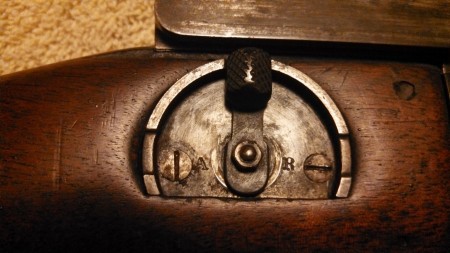
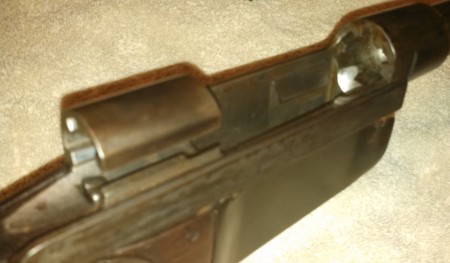
This early Mondragon rifle was made in two calibers. One was a fairly typical 6.5mm round, and the other was an unusual 5.2 x 68mm cartridge developed by Colonel Rubin (of Schmidt-Rubin rifle fame). It was an attempt to get a high velocity smallbore projectile with the less than fully developed smokeless powder that was then available. The cartridge used an internal piston, so that the case volume increased (and thus the pressure was moderated) as the bullet initially left the case. The rifle was have photos of here is in this 5.2mm caliber, which was ultimately dropped. Better powder made its special featured unnecessary, and it also occasionally had problems with the piston breaking up and lodging in the bore.


The 1894 Mondragon fed these cartridges from a 6-round en bloc clip much like that of the US M1 Garand (the 6.5mm version of the Mondragon held 8 rounds in the clips). A loaded clip would be loaded into the top of the action with the bolt open, and a catch in the back of the magazine well would hold it in place. A small lever in front of the trigger guard allowed a partially loaded clip to be removed. The magazine floorplate had a pair of flat springs fitted to it, which pushed upwards on a follower plate to feed the cartridges up to the bolt. The rear end of the follower had a swallowtail cut so that it would fit inside the walls of the en bloc clip.
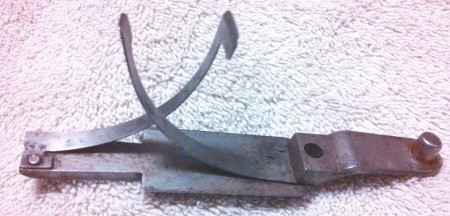
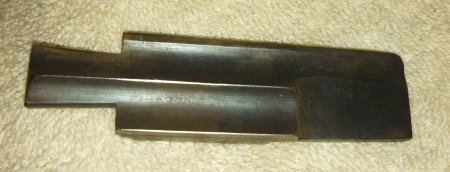
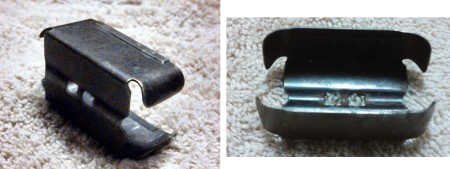
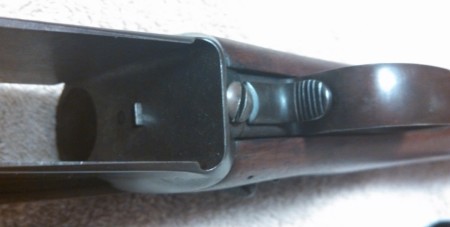
The rifle used a very modern-looking bolt with two sets of six small locking lugs arranged radially, very reminiscent of a Johnson or AR bolt. One set up lugs locked into the front of the receiver, and the second set was located at the rear of the bolt, behind the magazine. Inside the bolt was a simple firing pin/striker with a captive spring and a foot to catch on the trigger mechanism.
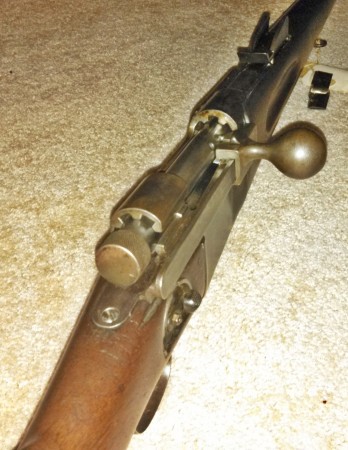

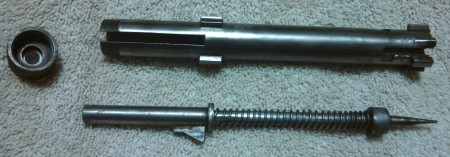
A cam track in the side of the bolt (no visible in any of our photos, unfortunately) was engaged by a lug on the bolt handle, forcing the bolt to rotate and lock and the end of its forward travel. In addition to the cam and groove, the bolt handle rode on a rail on the right side of the receiver.
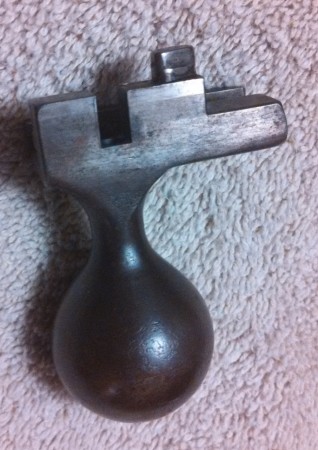
The idea of allowing the rifle to fire upon bolt locking without use of the trigger may have seemed to have potential back when this rifle was being made, but it creates a huge safety hazard. One would have to be extremely aware of the selector position if planning to carry the rifle with a round chambered. The model 1894 never saw significant production, possibly for this very reason. However, Mondragon continued his work in arms development, and later created the Model 1908 self-loader. Interestingly, the 1908 still showed evidence of concern with bolt action and rapid fire use, as it incorporated a catch allowing the shooter to deactivate the gas system and operate the rifle as a straight-pull bolt action.
Additional photos:

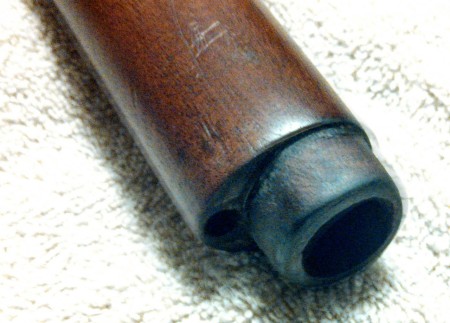
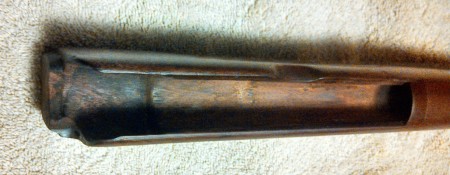
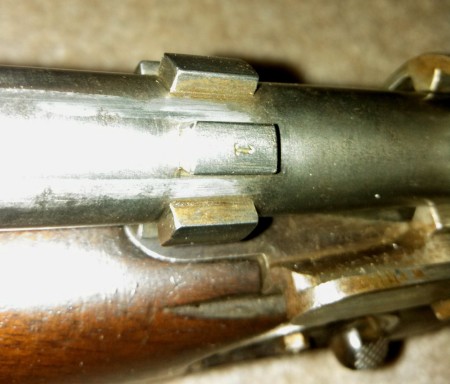
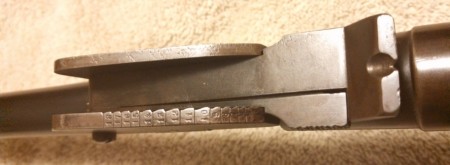
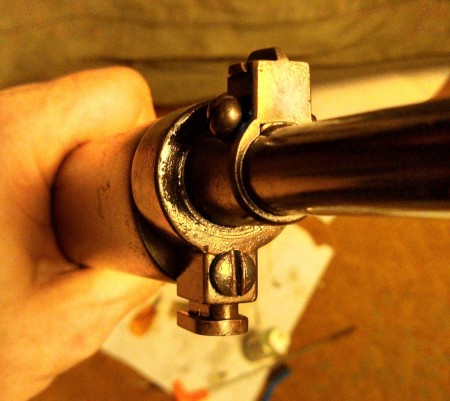
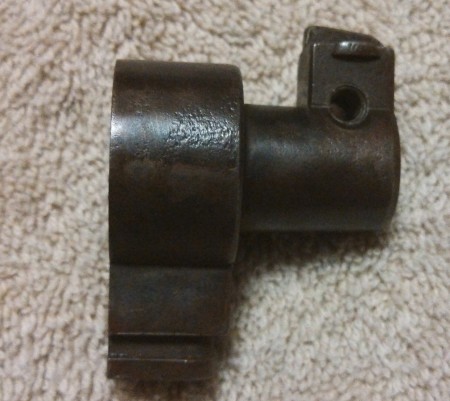


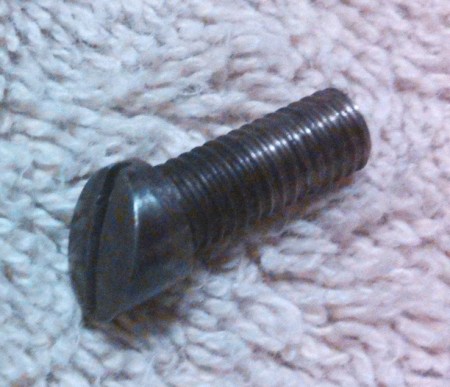

Interesting design. That looks a lot like a Garand en-bloc, enough that I have to wonder where Garand got the idea from.
Possibly, but the Pederson also used a top ejecting en bloc clip. En bloc in general was invented by Mannlicher, but Mannlichers drop out the bottom of the magazine through a hole (which, incidentally, is a great place for dirt to get in)
A Slamfire design!
I’m having trouble understand this…
“It was an attempt to get a high velocity smallbore projectile with the less than fully developed smokeless powder that was then available. The cartridge used an internal piston, so that the case volume increased (and thus the pressure was moderated) as the bullet initially left the case”
I just don’t see what this does… Why does the piston do anything different than just leaving some extra space at the end of the cartridge? What part of the system has problems with the pressure – the cartridge, bullet or rifle?
I believe early smokeless powders exploded like black powder, if an air gap were present ie noncompressed powder would lead to disasterous case explosions. This is just a guess.
The bolt also reminds me of the one in a Schwarzlose 1898